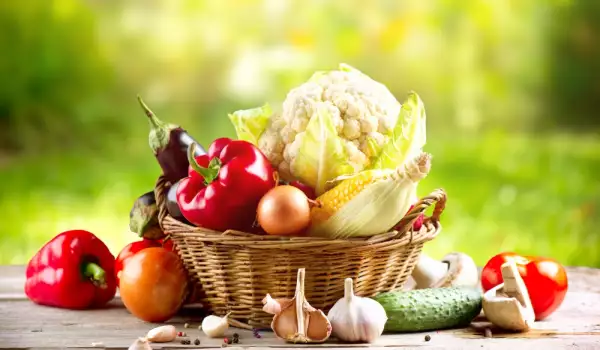Vegetables are one of the healthiest gifts that mother nature has given us. They are rich in vitamins and minerals and are good for consumption both during the warm and cold months. That is why it's good to know how to store them for the maximum amount of time.
For example, the exceptionally healthy fresh tomatoes, peppers and eggplants are best stored in a basket, placed in a well-ventilated area. Garlic and onions are best preserved on a string or in a net. They must be suspended in a dry and ventilated area, while making sure they don't freeze.
When using them in the kitchen, it is best to only use the required amount, since the temperature of the kitchen will lead to faster decaying of the products.
In some countries, people annually make sauerkraut through fermentation. This is also a method of storage for the vegetable. In order for it to be fragile and tight, and the sauerkraut soup to turn out sharp and pleasant for drinking, place a handful of corn between each row of cabbage.
When storing a certain vegetable, be sure to realize that it must not be stored along with fruits in the same area. This is because, certain fruits, especially apples, release the plant hormone ethylene, which shortens the shelf life of vegetables, since it makes them ripen faster.

For long-term storage, only choose vegetables without any flaws. If you allow any with defects, then the decay, pests and diseases may contaminate the rest of the vegetables. They must also be checked regularly, in order to remove every decaying vegetable.
The perfect time for picking and storing is during dry weather. This way, moist vegetables will decay much faster.
Potatoes for example, require storage in a dark, cool and humid area. This makes them the perfect inhabitants of cellars. They can be spread out along the floor on top of cardboard or arranged in cases.
It is recommended to grab potatoes from the bottom part of the crate or case, so that the ones on top fall and tumble. Thus, they will sprout roots much more slowly. The temperature of the storage area must not fall below 40°F (4 °C). If that does happen, the potato starch may turn into sugar and the potatoes will gain a sweet taste.

In general, all root vegetables, such as carrots, celery, beetroots should also be stored in humid and cool cellars. It is good to cover these vegetables with moist sand.
Different vegetables have different shelf lives, after which they decay, no matter how well stored they are. For example:
- Cabbage, celery roots, turnips, carrots, onions, garlic and beetroots must be stored in an average temperature of 1 30°F (°C) and can last half a year;
- Chinese cabbage, cauliflower, zucchini, eggplants, peppers and celery are stored at temperatures between 50-59 °F (10-15 °C), and are good for a few weeks;
- Broad beans, green beans, broccoli and cucumbers, stored between 50-53.5 °F (10-12 °C) are good for consumption within 2 weeks;
- Tomatoes, fresh herbs, radishes, spinach and asparagus, withstanding up to 50°F (11 °C) are fit for consumption for only 3 days.
And a tip - in order to freshen a withered vegetable, simply place it in cold water for 1 hour with 1 tbsp of vinegar. The effect is astounding.






















